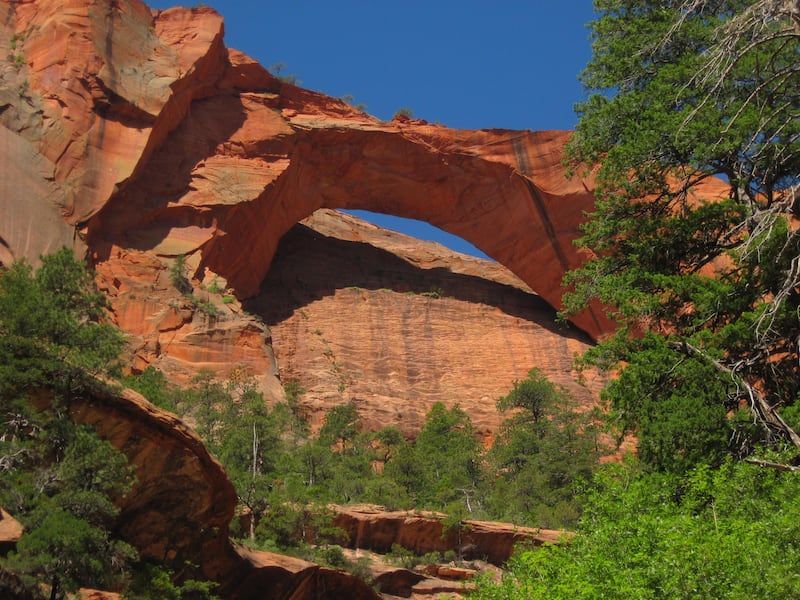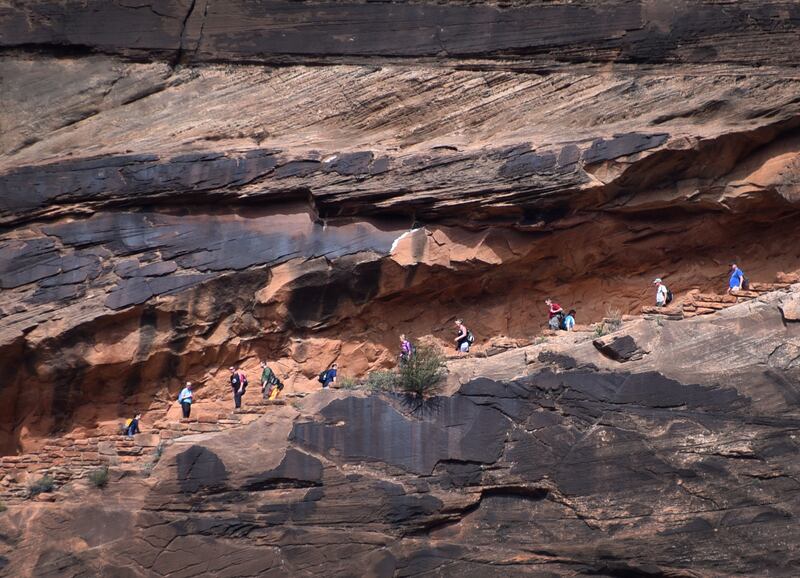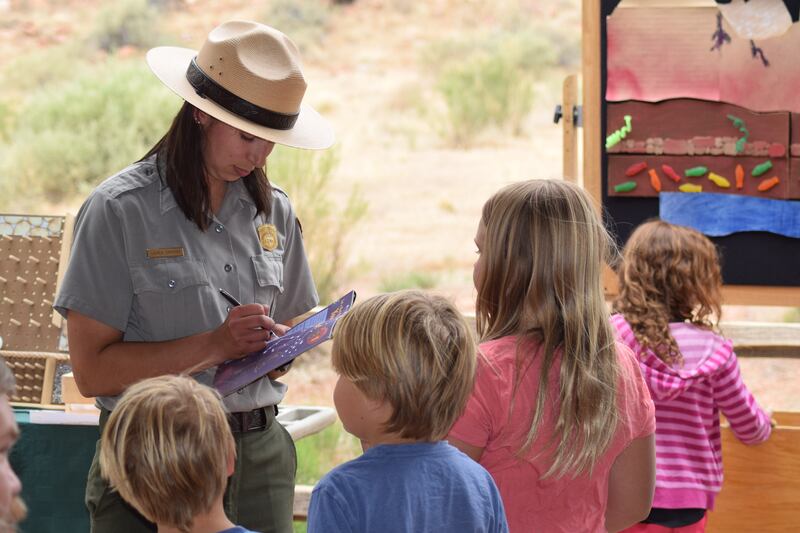Visitors at the St. Louis World’s Fair in 1904 couldn’t believe their eyes as they saw Frederick S. Dellenbaugh’s paintings of Zion National Park.
The brilliant red, orange and rust cathedrals unique to the western red rock country that towered in his desert landscapes were dismissed as fabrications by those who had only been exposed to life in the eastern United States.
Since then, people have accepted the fact that this natural wonderland is, in fact, real. And according to decades of growing visitation numbers, more people hunger to see its grandeur for themselves.
Power in a name
Human habitation in Zion began 8,000 years ago, but it wasn’t until Latter-day Saint settlers arrived in the 1860s that this area of southwestern Utah began to form the identity we know today.
The name Zion was assigned by these early settlers, which means a place of peace, refuge and sanctuary. This was culturally and biblically significant to the Latter-day Saint population, and fitting as a symbol for the place they called home after fleeing persecution in the East.
Although the park was named Mukuntuweap National Monument in 1909 after the Paiute word for “straight canyon,” it eventually became Utah’s first national park in 1919 and reclaimed the name Zion.
“It’s a sanctuary for geology, for wildlife, for human history,” Mike Large, a Zion National Park ranger, said in an interview with Deseret News, “it’s a sanctuary for people seeking to get away from the outside world and find a nice, quiet place. But that’s kind of neat that all national parks, in a sense, are sanctuaries, but in Zion, it’s incorporated into our name.”
5 parks in 1
Large has spent the last 35 years working in the park after falling in love with southern Utah during college. He started as a janitor at Zion Lodge and is now a seasoned ranger who’s accustomed to all things Zion, from its infrastructure to its educational programs to its ecological diversity.
“The thing about Zion is that it’s about five parks in one,” Large said. “If you go to different parts of Zion, you’re gonna see totally different landscapes from high plateau to desert to wilderness to slot canyons. ... There’s so many different types of environments in one park and that leads, of course, to a wide variety of plant life and wildlife as well.”

This wildlife includes the large California condor population that Zion houses, which is part of a massive program created by the U.S. Fish and Wildlife Service to save the endangered species back in 1992. As of 2019, 1,000 condors have been born as part of this recovery program.
Eugenne Moisa, another park ranger at Zion, shared the reason for this unusual diversity in an email.
“The park is uniquely located at the junction of the Colorado Plateau, Great Basin and Mojave Desert regions,” Moisa said. “The park also has an elevation range of over 5,000 feet, which comprises four different life zones.”
Visitors can be found hiking up Angels Landing or past the Emerald Pools, scaling Kolob Canyons, driving down Zion-Mount Carmel Highway or catching some zzz in the Lava Point Campground — all different aspects of Zion’s recreational opportunities that bring people to this part of southern Utah.

You may even recognize grandiose views of Zion in as many as 81 nostalgic Western films, including “Butch Cassidy and the Sundance Kid.” As a backdrop to the adventures of Western nomads and gunfighters, Zion has been known to “come alive with nostalgia” as one of “America’s most scenic and most adventurous parks,” according to visitutah.com.
The people of Zion
“One of the things I really do like about working at the park is the people I work with,” Large said. “There’s a lot of professional, amazing people that work in Zion.”
Large also praised the park’s unique shuttle system, which runs from April to October. He says that shuttles allow rangers, shuttle drivers and visitors to interact more personally and efficiently transport visitors throughout the park. This has been vital in the process of adjusting to the fluctuation of visitors each year, which can be seen in this video.
In particular, Large enjoys meeting visitors from all over the world.
Only 60% of visitors are American while 40% are foreign, which Large described in a presentation he gave at the park. This adds up to the 4.3 million visitors to the park each year.
And the numbers keep rising.
Maintaining Zion during this barrage of tourists is a “balancing act,” according to Large. “The mandate of the National Park Service is to make things available, but also to preserve them for future generations.”
A community of stewardship
Large described how visitation in recent years has brought an increase in crowds, waste and graffiti. But rather than ban visitors, rangers and partners of the park seek to create a sense of stewardship in the park’s visitors instead, and to hopefully inspire future generations through the Zion National Park Forever Project.
Zion Forever is the park’s official nonprofit partner and describes its members as “keepers of the sanctuary” on its website. As part of its ongoing preservation effort, its members have embarked on the Zion National Park Forever Project, which “engages in collaborative efforts with federal agencies, gateway communities and guests to create connections to the Greater Zion Landscape that will lead to lifelong stewardship,” according to its mission website. This includes creating educational programs for people in all walks of life, developing the visitor experience and focusing on long-term preservation funding projects.
“We’ve been establishing layers of meaningful programs to address the park’s greatest needs, including its first bookstores, a field institute, and a foundation,” Lyman Hafen, executive director of the Zion Forever Project, said at a Zion Forever Project celebration.
Hafen continued, “Now we’re bringing the full force of our heritage, plus our knowledge from the field, to re-commit ourselves to address the issues of today. Our goal is to grow a community of stewardship for Zion and her sister parks that is a model for the world.”
The education staff at Zion also maintain multiple programs for kids, one of which is called “Concrete to Canyons” which “(brings) underserved youth and families from Title 1 schools in the Las Vegas and Mesquite area to the park,” according to the Concrete to Canyons website.
“They bring children from the city who have never been to Zion before, and they get to camp out and hike and do activities,” Large said.
The Concrete to Canyons website pointed out that most times, these kids had never gone camping or had meaningful experiences in nature before.

“Our education staff does an amazing job to connect youngsters with Zion,” Large continued, “and create that love — those intellectual and emotional connections — but also have the youngsters bond with Zion.”


